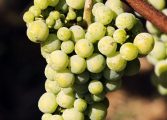Cheddar Cheese: A Comprehensive Guide

Introduction:
Cheddar cheese is a popular and versatile dairy product that has gained worldwide recognition for its unique taste and texture. In this article, we will delve into the origins, types, popularity, and qualitative measurements of cheddar cheese. We will also discuss the differences between various cheddar cheese varieties and explore the historical advantages and disadvantages associated with them.
1. Overview of Cheddar Cheese:

Cheddar cheese is a cow’s milk cheese that originated in the English village of Cheddar in the late 12th century. It is a hard cheese that undergoes an aging process, typically ranging from a few months to several years. Cheddar cheese is known for its smooth, creamy texture and distinct flavor, which can range from mild to sharp depending on the aging period.
2. Types and Popularity of Cheddar Cheese:
Cheddar cheese comes in various types, each offering a unique taste profile. Some popular types include mild cheddar, sharp cheddar, extra sharp cheddar, and aged cheddar. Mild cheddar is typically aged for a shorter period and has a milder flavor, making it suitable for sandwiches and snacking. Sharp cheddar undergoes a longer aging process and has a more pronounced, tangy taste, perfect for cooking and grating. Extra sharp cheddar has an even stronger flavor, while aged cheddar develops a crumbly texture and an intense, complex taste. These different types of cheddar cheese cater to diverse consumer preferences and culinary applications.
3. Quantitative Measurements of Cheddar Cheese:
To evaluate the quality of cheddar cheese, various measurements are used, including pH levels, moisture content, fat content, and salt levels. The pH level indicates the acidity of the cheese, while the moisture content affects its texture. High-fat content contributes to the richness of the cheese, and the salt levels play a crucial role in enhancing the flavor. These quantitative measurements help ensure that cheddar cheese meets certain standards and allows consumers to make informed choices based on their preferences.
4. Differences Between Cheddar Cheese Varieties:
Cheddar cheese can vary in texture, taste, and color due to factors such as aging time, production methods, and milk sources. Different aging periods result in contrasting flavors and textures, with longer aging typically yielding sharper flavors and crumbly textures. Furthermore, cheddar cheese made from raw milk may offer a more complex and distinct taste compared to those made from pasteurized milk. Additionally, regional variations in production techniques can lead to subtle differences in the overall character of cheddar cheese.
5. Historical Advantages and Disadvantages of Cheddar Cheese:
Throughout history, cheddar cheese has evolved to meet various needs and preferences. Initially, the aging process of cheddar cheese served as a method of preservation, allowing farmers to store excess milk for longer periods. Over time, the demand for cheddar cheese grew, and it became a popular export. While aging enhances the flavor and complexity of cheddar cheese, it also increases production costs and requires proper storage conditions. These historical advantages and disadvantages have shaped the development and perception of cheddar cheese.
Conclusion:
In conclusion, cheddar cheese is a versatile and beloved dairy product that offers a wide range of flavors and textures. By understanding the basics of cheddar cheese, exploring its types and popularity, examining quantitative measurements, discussing differences between varieties, and delving into its historical advantages and disadvantages, one can gain a deeper appreciation for this iconic cheese. Whether enjoyed on its own, melted in recipes, or paired with other ingredients, cheddar cheese continues to satisfy the palates of food and beverage enthusiasts worldwide.
















































